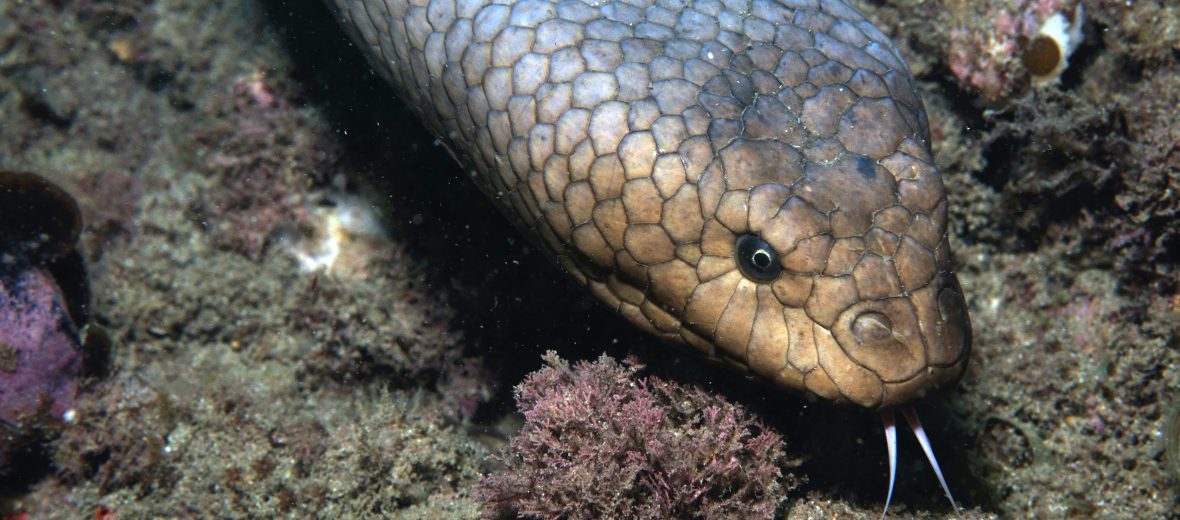
The venomous olive sea snake can be found up to 230 feet deep along Australia’s reefs, but is most often found up to 131 foot depths. While these snakes are known to be inquisitive and will often approach divers, bites rarely happen and typically only to those who mishandle or threaten them. Even though they face the threats of habitat destruction, pollution, and climate change, these serpents of the sea are listed as Least Concern by the IUCN.
First the Stats…
Scientific name: Aipysurus laevis
Weight: Up to 6.6 lbs.
Length: Up to 6 feet
Lifespan: Up to 15 years
Now on to the Facts!
1.) Their diet consists of fish, crustaceans, eggs, and molluscs.
2.) Olive sea snakes are nocturnal (active at night).
3.) Bony fishes, sharks, and predatory birds all prey on these snakes.
4.) These snakes can stay submerged for up to 2 hours, then they need to surface to breathe.
5.) Reproduction takes place from May – July.
But wait, there’s more on the olive sea snake!
6.) Females birth live young, not eggs, and can have as many as 11 snakelets.
7.) The venom of a sea snake also works as a digestive enzyme and aids in breaking down their prey’s tissue.
Did you know…?
Drop-for-drop their neurotoxic venom is among the most toxic sea snake venom, next to the banded sea snake’s. A single bite can kill up to 20 humans!
8.) Shedding takes place between every 2 – 6 weeks.
9.) These critters also go by the common names of golden sea snake or olive brown sea snake.
10.) The olive sea snake has the longest fangs of any known sea snake.
Now a Short Olive Sea Snake Video!
Be sure to share & comment below! Also, check out the Critter Science YouTube channel. Videos added regularly!
Want to suggest a critter for me to write about? Let me know here.
Think you know a lot about critters? Try your hand at these fun, free quizzes:



